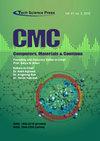Classification of Citrus Plant Diseases Using Deep Transfer Learning
IF 1.7
4区 计算机科学
Q3 COMPUTER SCIENCE, INFORMATION SYSTEMS
引用次数: 30
Abstract
: In recent years, the field of deep learning has played an important role towards automatic detection and classification of diseases in vegetables and fruits. This in turn has helped in improving the quality and production of vegetables and fruits. Citrus fruits are well known for their taste and nutritional values. They are one of the natural and well known sources of vitamin C and planted worldwide. There are several diseases which severely affect the quality and yield of citrus fruits. In this paper, a new deep learning based technique is proposed for citrus disease classification. Two different pre-trained deep learning models have been used in this work. To increase the size of the citrus dataset used in this paper, image augmentation techniques are used. Moreover, to improve the visual quality of images, hybrid contrast stretching has been adopted. In addition, transfer learning is used to retrain the pre-trained models and the feature set is enriched by using feature fusion. The fused feature set is optimized using a meta-heuristic algorithm, the Whale Optimization Algorithm (WOA). The selected features are used for the classification of six different diseases of citrus plants. The proposed technique attains a classification accuracy of 95.7% with superior results when compared with recent techniques.基于深度迁移学习的柑橘植物病害分类
近年来,深度学习在蔬菜和水果病害的自动检测和分类方面发挥了重要作用。这反过来又有助于提高蔬菜和水果的质量和产量。柑橘类水果以其美味和营养价值而闻名。它们是维生素C的天然和众所周知的来源之一,种植在世界各地。柑桔病害严重影响柑桔果实的品质和产量。提出了一种基于深度学习的柑橘病害分类方法。在这项工作中使用了两种不同的预训练深度学习模型。为了增加本文中使用的柑橘数据集的大小,使用了图像增强技术。此外,为了提高图像的视觉质量,还采用了混合对比度拉伸。此外,利用迁移学习对预训练模型进行再训练,并利用特征融合丰富特征集。融合的特征集使用一种元启发式算法,鲸鱼优化算法(WOA)进行优化。所选择的特征用于柑橘植物6种不同病害的分类。该方法的分类准确率达到95.7%,与现有的分类方法相比效果更好。
本文章由计算机程序翻译,如有差异,请以英文原文为准。
求助全文
约1分钟内获得全文
求助全文
来源期刊

Cmc-computers Materials & Continua
工程技术-材料科学:综合
CiteScore
5.30
自引率
19.40%
发文量
345
审稿时长
1 months
期刊介绍:
This journal publishes original research papers in the areas of computer networks, artificial intelligence, big data management, software engineering, multimedia, cyber security, internet of things, materials genome, integrated materials science, data analysis, modeling, and engineering of designing and manufacturing of modern functional and multifunctional materials.
Novel high performance computing methods, big data analysis, and artificial intelligence that advance material technologies are especially welcome.
 求助内容:
求助内容: 应助结果提醒方式:
应助结果提醒方式:


